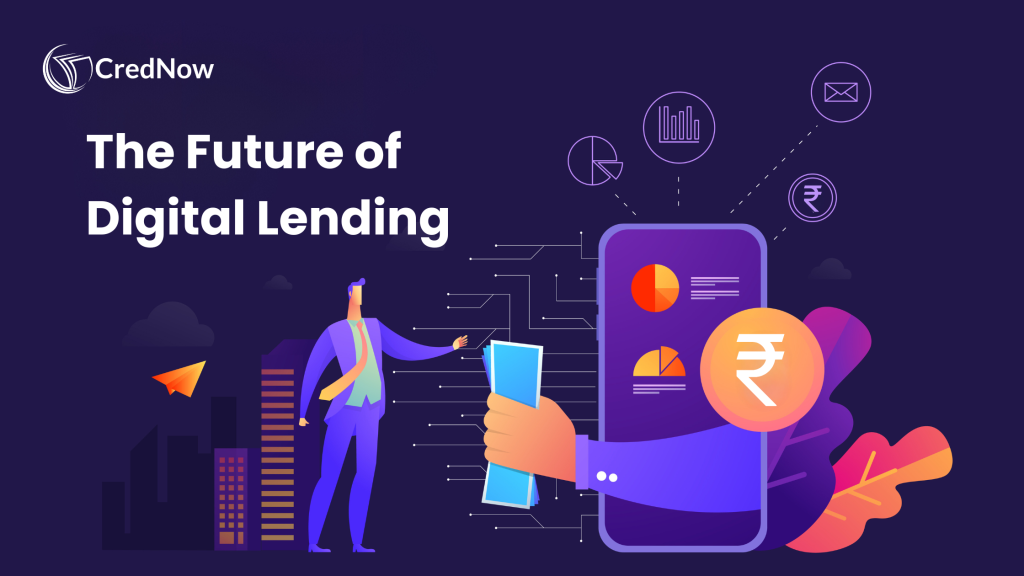The lending landscape in India has seen a major shift, driven by evolving customer behaviour, technological innovation and digital adoption. The days of endless paperwork, filling up complex forms, long wait times, and limited access are becoming a thing of the past. Today, we are at the brink of a financial revolution where advanced technologies are transforming the way borrowing and lending work.
Today loans are approved in minutes, not days. Financial services have reached even the most remote areas. Lenders are using the power of artificial intelligence and big data to create highly personalized lending experiences. This is a rapidly emerging reality in India’s digital lending space.
From traditional banks adopting fintech solutions to agile startups challenging the usual ways of doing business, the digital lending industry is growing at an incredible pace. With the global market expected to reach an astonishing US$453 billion by 2024 and India is set to lead this financial transformation.
In this blog, we’ll explore the key trends that are shaping the future of digital lending in India. We’ll look at how technology is breaking down barriers, making credit more accessible, and creating new opportunities for both borrowers and lenders.
1. AI-Driven Lending
Artificial Intelligence (AI) and Machine Learning (ML) are no longer just buzzwords in the financial services industry; they are the backbone of the future of digital lending. These technologies are being leveraged to enhance every aspect of the lending process – from credit scoring and risk assessment to customer service and fraud detection.
AI-powered algorithms can analyze vast amounts of data much faster than traditional methods, which provide lenders with a more accurate assessment of a borrower’s creditworthiness. This means that even individuals with limited credit histories can access loans based on alternative data points such as payment history for utilities. As these technologies continue to evolve, the lending process is becoming more streamlined and democratic while reducing the time from application to disbursement significantly.
Moreover, AI and ML can help in customizing loan offers to match the specific needs of individual borrowers, thus improving customer satisfaction and loyalty. By 2030, it’s expected that nearly all major digital lending platforms will incorporate AI and ML to a large extent, making lending faster, more reliable, and more accessible.
Recommended Read: Future of AI-driven solutions in digital lending
2. Hyper-personalized Lending
The future of lending lies in hyper-personalization. With the wealth of data available, lenders are now able to offer highly personalized loan products that cater to the unique financial situations and aspirations of each borrower.
Digital lenders are using data analytics to create customized loan offers that consider factors such as spending patterns, earning potential, payment behaviour and financial goals. This level of personalization not only improves the borrower’s experience but also increases the likelihood of timely repayments, as the loan terms are better suited to the borrower’s financial capabilities. In the future, we can expect lenders to further refine these personalized offerings. For instance, loan products may become dynamic, adjusting interest rates and repayment terms in real-time based on changes in the borrower’s financial status.
3. Alternative Lending Models
The digital lending landscape is witnessing the rise of alternative lending models such as Peer-to-Peer (P2P) lending, Buy Now Pay Later (BNPL) services, and co-lending arrangements. These models offer more flexible and convenient borrowing options, particularly for individuals and small businesses that may not qualify for traditional loans.
P2P lending platforms connect borrowers directly with individual lenders, bypassing traditional financial institutions. This model has gained popularity due to its simplicity and the potential for lower interest rates. Similarly, BNPL services are becoming increasingly popular among younger consumers who prefer the flexibility of paying for purchases in instalments without incurring interest.
Co-lending, where traditional banks partner with NBFCs and other digital lenders, is another model that is expected to grow. This allows banks to tap into the technological capabilities of digital platforms, while digital lenders benefit from the trust and customer base of established financial institutions.
Embedded lending, where financial services are seamlessly integrated into non-financial platforms, is a trend that has gained momentum. E-commerce platforms, for example, are increasingly offering Buy Now, Pay Later (BNPL) options at checkout, allowing consumers to split their payments into manageable instalments.
Recommended Read: Master Your Credit Score and Boost Your Financial Health
4. Open Banking
Open banking is set to transform the digital lending landscape in India, offering borrowers unprecedented control over their financial data. By enabling secure data sharing with multiple lenders, open banking allows individuals to access personalized loan offers tailored to their unique financial profiles. This increased transparency and competition among lenders promise not only better loan terms for borrowers but also a more inclusive financial ecosystem. As open banking initiatives gain traction, they are poised to be a key driver in the future of digital lending, fostering innovation, efficiency, and customer-centric solutions.
5. Financial Inclusion
One of the most significant impacts of digital lending is its potential to enhance financial inclusion. In a country like India, where a large portion of the population is still underserved by traditional financial institutions, digital lending platforms can play a crucial role in providing access to credit.
With the rise of mobile technology and internet penetration, even individuals in remote areas can now apply for loans through digital platforms. Digital lenders often use alternative data to assess creditworthiness, which means that people without a formal credit history—such as small business owners and gig workers—can still access financial services.
Furthermore, digital lending platforms are increasingly partnering with non-banking financial companies (NBFCs) and microfinance institutions to reach the unbanked and underbanked segments of the population. These partnerships help in providing more comprehensive financial solutions, including microloans, which are essential for small businesses and individuals in rural areas. As we move forward, the focus on financial inclusion is expected to intensify.
Recommended Read: Tips for Managing Credit Card Debt: A Step-by-Step Guide
In Conclusion
The digital lending landscape in India is on the cusp of significant transformation, driven by the integration of AI, ML, personalized products, and alternative lending models. These technologies will not only accelerate growth but also make the future of digital lending more inclusive, secure, and personalized. As the industry evolves, the focus on financial inclusion and customer experience will be paramount, ensuring broader access to credit for millions. By 2030, digital lending will play a pivotal role in India’s financial revolution, redefining how credit is accessed and managed, and fostering economic growth and empowerment nationwide. To stay ahead in this evolving landscape, explore how CredNow is leveraging these trends to provide cutting-edge financial solutions.

FAQs
Q1: What is digital lending?
Digital lending refers to the process of offering loans through digital platforms, using technology to assess creditworthiness, disburse funds, and manage repayments. It typically involves minimal paperwork and faster processing compared to traditional lending methods.
Q2: What technologies are driving the advancement of digital lending?
Digital lending is evolving rapidly, driven by several key technologies that enhance efficiency, security, and customer experience:
Artificial Intelligence (AI) and Machine Learning (ML): These technologies enable quick data analysis and more accurate credit assessments, using both traditional and non-traditional data sources.
Big Data Analytics: Improves risk assessment by analyzing large datasets, allowing for better borrower behavior predictions.
Cloud Computing: Provides scalable, cost-effective infrastructure for handling large volumes of loan applications.
Digital Identity Verification: Enhances security and efficiency by using biometric authentication and electronic signatures.
APIs (Application Programming Interfaces): Facilitate seamless integration between financial systems, enhancing user experience and enabling innovative lending solutions.
These technologies collectively transform digital lending, making it faster, more secure, and user-friendly.
Q3: How does AI improve the digital lending process?
AI enhances digital lending by analyzing large datasets to assess credit risk more accurately, detect fraud, and personalize loan offers. It streamlines the lending process, making it faster, more accurate, and more tailored to individual borrower needs.
Q4: What are alternative lending models?
Alternative lending models include Peer-to-Peer (P2P) lending, Buy Now Pay Later (BNPL) services, and co-lending. These models offer more flexible borrowing options, often with fewer requirements than traditional loans, making them accessible to a wider range of borrowers.
Q5: What are the regulatory challenges facing digital lending?
As digital lending grows, regulators are introducing new guidelines to protect consumers and ensure financial stability. Challenges include ensuring data privacy, preventing fraud, and maintaining fair lending practices while fostering innovation.



